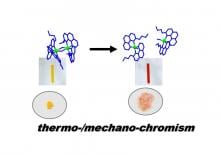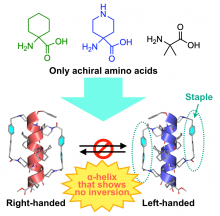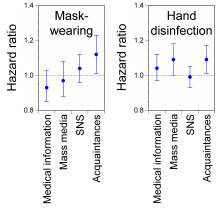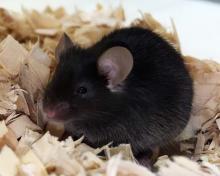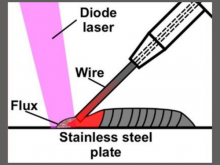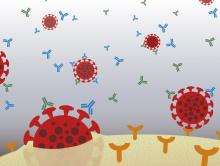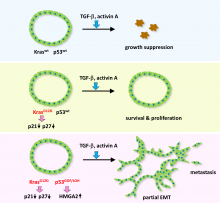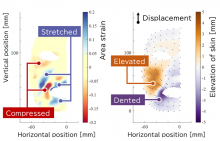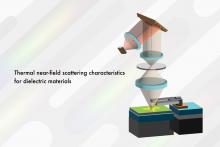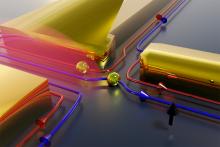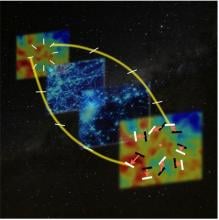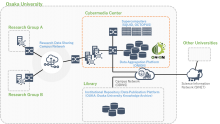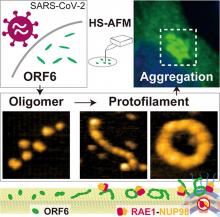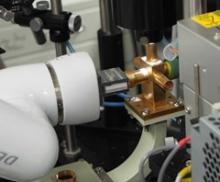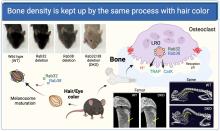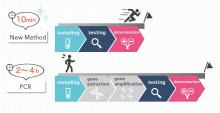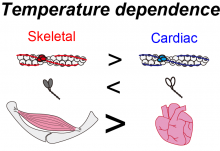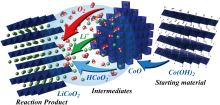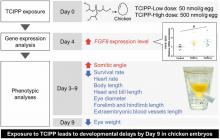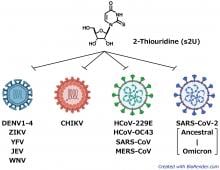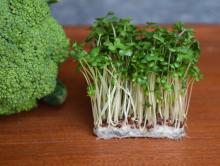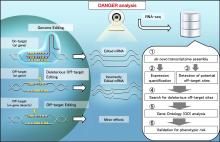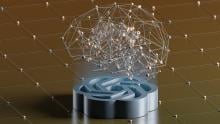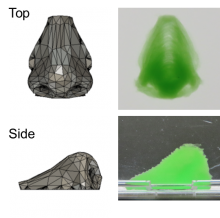Japan
News
17 Nov 2023
Researchers at Kanazawa University report in Nature Communications how they can control chirality inversion in α helical peptides.
17 Nov 2023
Rapid preparation and application of a panel of clinical antibodies armed with B-BiTE for refractory malignancies
17 Nov 2023
Researchers from Osaka University found that Japanese people who used medical information were more likely to wear masks and disinfect their hands even before the COVID-19 outbreak, while those who exchanged information with acquaintances were more likely to newly start mask-wearing and hand disinfection post outbreak. This will assist in the development of risk communication strategies to promote infection-preventive behavior in a timely manner.
14 Nov 2023
Cancer stem cells cause the aging of macrophages in mice with healthy immune systems, creating conditions for the formation of tumors.
13 Nov 2023
Steel and aluminum are key players in supporting economic growth, yet materials joining them remain unexplored due to their fusion zones’ brittleness. A new 3D printing method’s fix may be a step toward a steel-aluminum hybrid renaissance.
10 Nov 2023
New insights on how individual immune responses to the SARS-CoV-2 virus, particularly in mutant strains, can influence the efficacy of COVID-19 vaccines
09 Nov 2023
A new study suggests that self-deception is the key to understanding irrational actions of national leaders in war, as exemplified by Vladimir Putin's invasion of Ukraine.
09 Nov 2023
Researchers at Kanazawa University report in Cancer Research how Kras and p53 mutations influence the tumor suppressor and promoter functions of a TGF- ß pathway. The findings may lead to a new approach for colorectal cancer therapy.
09 Nov 2023
A research team led by Osaka University used 125 physical markers to understand the detailed mechanics of 44 different human facial motions. The aim was to better understand how to convey emotions with artificial faces. Beyond helping with the design of robots and androids, this research can also benefit computer graphics, facial recognition, and medical diagnoses.
07 Nov 2023
Microscopes usually use backscattered radiation to create images, but a research group from the Institute of Industrial Science, The University of Tokyo, is developing an all-new method to study materials using the faint light they emit, generated by heat
06 Nov 2023
Researchers at the Institute of Industrial Science, The University of Tokyo study the quantum mechanical phenomenon known as vacuum fluctuations using a nanoscale hybrid device, which may lead to ultrasensitive quantum sensors or information processors.
02 Nov 2023
Future missions will be able to find signatures of violating the parity-symmetry in the cosmic microwave background polarization more accurately after a pair of researchers has managed to take into account the gravitational lensing effect, reports a new study in Physical Review D, selected as an Editors' Suggestion.
02 Nov 2023
A researcher from Osaka University has investigated the associations between mask usage and the reasons people give for wearing a mask. Online surveys were conducted before and after policies that downgraded the status of COVID-19. The study found that 59% of respondents continued wearing masks even after policy changes. Several sociological and psychological reasons other than disease prevention for mask usage were identified.
01 Nov 2023
Osaka University and NEC Corporation are jointly developing a data infrastructure called RED-ONION to accelerate open science by reducing the burden on researchers to record the research process, share research data and publish them on the data aggregation platform. They are currently engaged in the R & D of three elemental technologies: (1) Technology to integrate a data aggregation platform and data publication platform, (2) Technology to generate research process information on supercomputers, and (3) A high-speed data transmission function. These research results will be showcased at the International Conference for High Performance Computing, Networking, Storage, and Analysis (SC23) scheduled to be held from November 12 to 17, 2023 in Denver, Colorado.
27 Oct 2023
Researchers at Kanazawa University report in the Journal of Physical Chemistry Letters high-speed atomic force microscopy studies that shed light on the possible role of the open reading frame 6 (ORF6) protein COVID19 symptoms.
27 Oct 2023
To quickly and accurately characterize prospective materials for use in solar energy, researchers built an automated system to perform laboratory experiments and used machine learning to help analyze the data they recorded. Their goal is to identify semiconductor materials for use in photovoltaic solar energy, which are highly efficient and have low toxicity.
26 Oct 2023
Research out of Osaka University finds an overlap in the mechanism of hair color determination and bone resorption, which is associated with bone related diseases like osteoporosis. The findings revealed that proteins named Rab32 and Rab38 play pivotal roles in bone resorption in osteoclast, cell specialized in the process. These proteins are also crucial for pigmentation of hair and skins.
26 Oct 2023
Research from Osaka University demonstrates a nanopore-based technique that can detect different variants of SARS-CoV-2, the virus that causes COVID-19. The method was very effective in detecting the Omicron variant of the virus in the saliva of people with COVID-19.
25 Oct 2023
Pair-bonded Java sparrows show enlarged eye rings to signal breeding readiness.
24 Oct 2023
Research out of Osaka University investigated the effect of increased cell temperature on the contractility of skeletal muscle and cardiac muscle by heating the muscle proteins using advanced microscopical techniques. The findings indicated that skeletal muscle is more sensitive to increases in temperature than cardiac muscle, and that heating can rapidly activate the contractile proteins of skeletal muscle, thereby improving muscle performance.
24 Oct 2023
Layered lithium cobalt oxide, a key component of lithium-ion batteries, has been synthesized at temperatures as low as 300°C and durations as short as 30 minutes.
20 Oct 2023
Evaluation of developmental toxicity in early chicken embryos exposed to tris(2-chloroisopropyl) phosphate

20 Oct 2023
This study examined how the origin (wild or hatchery-reared), feeding area (Baltic Sea mainstem, Bosnian Sea, and Gulf of Finland), and organic halogen compound (OHC) concentrations of Baltic Sea Atlantic salmon (Salmo salar) affect the salmon liver proteome, transcriptome, and oxidative stress markers. Results suggest that the Baltic salmon liver proteome, together with the transcriptome, is influenced more by OHC concentrations and oxidative stress levels in the feeding area than by their origin.
20 Oct 2023
Structural characteristics of environmental pollutants and computer simulations predict effects on the endocrine system of seals
20 Oct 2023
A broad-spectrum antiviral drug candidate, 2-thiouridine, that targets positive-strand RNA viruses has been identified and characterized.
20 Oct 2023
A research team from Osaka Metropolitan University has found that polysulfides are abundant in broccoli sprouts. They found that the amount of polysulfides increased dramatically during growth, by an approximately 20-fold in seeds by the fifth day of germination. Furthermore, a comprehensive analysis of the polysulfides detected a number of polysulfide candidates whose structures have not yet been determined. The identification of these unknown polysulfides and detailed analysis of their pharmacological activities are expected to enable the development of new preventive and therapeutic strategies and medicines for cancer, neurodegenerative diseases, stroke, inflammation, and other diseases.
20 Oct 2023
Risk-averse on/off-target assessment for CRISPR editing without reference genome
16 Oct 2023
The latest ‘large language model’ artificial intelligence system, GPT-4, could aid chemistry researchers, but limitations reveal the need for improvements.
16 Oct 2023
Researchers from Osaka University developed a cell-friendly means of bioprinting at high fidelity. By successive injection of a cell-based ink and a printing support, the ink solidified into defined geometries, even into the shape of a human nose. Printed cells remained viable for at least two weeks. This work is an important milestone toward developing lab-grown tissues and organs, and eventually advancing regenerative medicine as well as animal-free drug safety testing.
Events

27 Aug 2008
Realizing high quality of life and extension of health life expectancy through the consolidation of advanced science, health studies, and medical care

12 Jul 2008
The sessions include "Promise and problems of molecular targeted therapiesin children: Lessons from Hedgehog pathway inhibitors", "Regeneration of the damaged Central Nervous System", "Imaging cognition and genetics" and "Aquaporin water channels: from atomic structure to clinical medicine"

11 Jun 2008
The British Nobel Laureate Lecture Series, a collaboration between Keio University and the British Embassy, commemorates the 150th anniversaries of the founding of Keio University, and the initiation of UK- Japan diplomatic relations. Four lectures will be held as a part of Keio's 150th Anniversary Commemorative Project and UK-JAPAN 2008.

06 Jun 2008
Topics include Latest Trend in Standardization of IPTV, Trend in Standardization of Content Creation and Digital Rights Permission Code, International Standardization of 4th Generation Mobile Communication and Strategy in Japan and more

12 Jun 2008
A collaboration between Keio University and the Dutch Embassy in Japan, this seminar on international peace cooperation will focus on the relationship between security and development in the provision of international assistance to conflict and post-conflict areas.

20 May 2008
Postsocialist economies in Asia as well as in Europe pose many problems for economic policy makers and the international community since the fall of the Iron Curtain. This lecture will provide a broad review of the experience of dealing with postsocialist economies that has been accumulated at the Halle Institute for Economic Research.

29 May 2008
Tokyo, Japan - Special Lecture in English on US-China Relations by Professor Harry Harding, from George Washington University. This programme is sponsored by Graduate School of Asia-Pacific Studies and Waseda University Institute of Asia-Pacific Studies.

09 May 2008
Keio University and the British Embassy in Tokyo present KEIO 15O/ UK-JAPAN 2008 British Nobel Laureate Lecture Series

30 May 2008
KEIO University and the Embassy of Greece to Japan are organising a symposium dedicated to the most translated Greek writer of the 20th century, Νikos KAZANTZAKIS.

12 Apr 2008
Where Is Japan Headed? :Views and Expectations from Overseas

10 Mar 2008
The Tokyo University of Science will be holding the first International Collaboration Workshop in March 2008 with the University of California at Davis, University of California at Santa Cruz and Ohio State University. Another nine world leading research universities are invited. The topics of the workshop is focusing on "Materials Research" f

10 Mar 2008
Tokyo University of Science will hold the 3rd International Symposium on "Promotional Bases for Leading Architectural Fire Safety Engineering Research" at Tokyo, March 10 and 11

11 Mar 2008
The Model G8 Youth Summit 2008 will be held in Yokohama and Tokyo from 11 to 15 March, 2008. Participants will act as government representatives, secretaries, and sherpas to discuss a topic. A panel discussion will also be held in regards with environmental issues. Panelists include leading figures from various fields such as Prof. Heizo Takenaka.

26 Feb 2008
This conference will serve to launch JCOR (the Japanese Centre for Ontological Research), which has recently been funded by the Japanese Government's Ministry of Education and Science (MEXT) under the framework of the Open Research Centre on Logic and Formal Ontology.

20 Dec 2007
New Delhi, India - Author, poet, foreign policy expert, columnist, and Rhodes scholar, former Ambassador Aftab Seth will speak on "Japan Today: A Deflated Giant?'

18 Sep 2007
SOI Asia and Platform Design Laboratory,Keio Research Institute at SFC will hold an online international symposium on Entrepreneur on Tuesday, September 18th, 2007, from 16:00 to 19:00(Japan Time).

18 Sep 2007
Skill Science is a new multidisciplinary research area with approaches including artificial intelligence, cognitive science, sports science, bio-mechanism, ecological psychology and so on. In the future, it is expected to bring insight into researches on robotics, aiming to bring human-like flexible and skillful movement into realization.

03 Sep 2007
The Quantum Group of the Quantum Bio-Informatics Center’s (QBIC) Research Center will host an event entitled the “Mini-Workshop on Recent Experimental Results of Cuprates.” Researchers from differing fields (STM, ARPES, Neutron, NMR, etc.) will be invited to the mini-workshop to explore its topic over the course of two days.

07 Jun 2007
The Research Center for the Holistic Computational Science of the TUS Research Institute for Science and Technology is to hold an international symposium on the theme "Frontiers in Computational Science of Nanoscale Transport" in conjunction with the Atomistix Workshop 2007.

27 Apr 2007
London - World renowned academics from Keio University and University College London will be presenting the latest advances in neuroscience research in this afternoon symposium. Attendance is free of charge.

26 Mar 2007
Tokyo Japan - In celebration of its 150-year anniversary next year, Keio University will organize a two-day workshop for graduate students entitled "Changing Faces of Nationalism in Asia" on 26-27 March 2007.

14 Mar 2007
The International Conference in Quantum Bio-Informatics Center (QBIC) will be held at Noda Campus of Tokyo University of Science from March 14 to March 17, 2007

02 Dec 2005
Theme: Advanced technologies for building sustainable society

14 Jan 2006
This event is Free of charge and will be conducted in English

29 Jun 2005
Health social security in Japan is at a cross-road: whether to gradually reduce the coverage to a basic minimum as in the United States, or to maintain the current level following the European example.
Researchers
Sorry, no researchers coming up for this topic.
Giants in history
Ruby Sakae Hirose (1904 – 1960) was a Japanese-American scientist whose research contributed significantly to our understanding of blood clotting, allergies and cancer.
Haisako Koyama (1916 – 1997) was a Japanese solar observer whose dedication to recording sunspots – cooler parts of the sun’s surface that appear dark – produced a sunspot record of historic importance.
Michiaki Takahashi (17 February 1928 – 16 December 2013) was a Japanese virologist who developed the first chickenpox vaccine.
Toshiko Yuasa (11 December 1909 – 1 February 1980) was the first Japanese female physicist whose research on radioactivity shed light on beta decay – the process in which an atom emits a beta particle (electron) and turns into a different element.
Baron Kitasato Shibasaburo (29 January 1856 – 13 June 1931) was a Japanese physician and bacteriologist whose work led to a new understanding of preventing and treating tetanus, diphtheria and anthrax.
By isolating soil microorganisms and studying the compounds they produce, Satoshi Omura (born 1935) discovered almost 500 organic compounds with unique properties that were produced by these microorganisms, including many new antibiotics.
In 1915, pathologist Katsusaburo Yamagiwa and his research assistant Koichi Ichikawa became the first to prove that chronic exposure to chemicals can cause cancer.
In 1915, Koichi Ichikawa along with pathologist Katsusaburo Yamagiwa became the first to prove that chronic exposure to chemicals can cause cancer.
Reiji Okazaki (8 October 1930 – 1 August 1975) and Tsuneko (7 June 1933) were a Japanese couple who discovered Okazaki fragments – short sequences of DNA that are synthesized during DNA replication and linked together to form a continuous strand.
Tsuneko (7 June 1933) and Reiji Okazaki (8 October 1930 – 1 August 1975) were a Japanese couple who discovered Okazaki fragments – short sequences of DNA that are synthesized during DNA replication and linked together to form a continuous strand.
Husband and wife team, Kimishige (3 December 1925 – 6 July 2018) and Teruko Ishizaka (28 September 1926 – 4 June 2019) discovered the antibody class Immunoglobulin E (IgE) that triggers allergic reactions. They also discovered that IgE antibodies attach to white blood cells, known as mast cells, releasing histamine, which causes allergic reactions.
Husband and wife team, Kimishige (3 December 1925 – 6 July 2018) and Teruko Ishizaka (28 September 1926 – 4 June 2019) discovered the antibody class Immunoglobulin E (IgE) that triggers allergic reactions. They also discovered that IgE antibodies attach to white blood cells, known as mast cells, releasing histamine, which causes allergic reactions.
Japanese chemist Takamine Jokichi (3 November 1854 – 22 July 1922) founded the Tokyo Artificial Fertilizer Company, where he isolated a starch-digesting enzyme (named takadiastase) from the fungus Aspergillus oryzae.
Hideki Yukawa (23 January 1907 – 8 September 1981) was awarded the Nobel Prize in Physics in 1949 for predicting the existence of the pi meson subatomic particle. Japan’s first Nobel laureate, Yakawa also expressed his support for nuclear disarmament by signing the Russell–Einstein Manifesto in 1955.
Shinichiro Tomonaga (31 March 1906 – 8 July 1979), together with Richard Feynman and Julian Schwinger, was awarded the Nobel Prize in Physics in 1965, for their contributions to advance the field of quantum electrodynamics. Tomonaga was also a strong proponent of peace, who actively campaigned against the proliferation of nuclear weapons and promoted the peaceful use of nuclear energy.
Japanese chemist Kenichi Fukui (4 October 1918 – 9 January 1998) was the first Asian scientist to be awarded the Nobel Prize in Chemistry. Together with Roald Hoffman, he received this honour in 1981 for his independent research into the mechanisms of chemical reactions.
Minoru Shirota (April 23, 1899 – March 10, 1982) was a Japanese microbiologist who invented the popular fermented drink Yakult.
Japanese physicist Ukichiro Nakaya (1900-1962) made the world’s first artificial snowflakes. He started his research on snow crystals in the early 1930s at Hokkaido University, where there is an unlimited supply of natural snow in winter. By taking over 3,000 photographs, he established a classification of natural snow crystals and described their relationship with weather conditions.
The techniques that make industrial pearl culturing possible were developed over a century ago at the Misaki Marine Biological Station in Japan. The station’s first director, Professor Kakichi Mitsukuri, emphasized to Kokichi Mikimoto in 1890 that stimulating pearl sac formation was important for pearl growth, and they went on to successfully develop methods for culturing pearls.
The field of solid-state ionics originated in Europe, but Takehiko Takahashi of Nagoya University in Japan was the first to coin the term ‘solid ionics’ in 1967. ‘Solid-state ionics’ first appeared in 1971 in another of his papers, and was likely a play on ‘solid-state electronics’, another rapidly growing field at the time.
Chika Kuroda (24 March 1884 – 8 November 1968) was a Japanese chemist whose research focussed on the structures of natural pigments.
Motoo Kimura (13 November 1924 – 13 November 1994) was a Japanese theoretical population geneticist who is best remembered for developing the neutral theory of molecular evolution.
Osamu Shimomura (27 August 1928 – 19 October 2018) was a Japanese organic chemist and marine biologist who dedicated his career to understanding how organisms emitted light.
Kikunae Ikeda (8 October 1864 – 3 May 1936) was a Japanese chemist who discovered the fifth basic taste, umami.
Umetaro Suzuki (7 April 1874 – 20 September 1943) was a Japanese scientist best remembered for his research on beriberi, a disease caused by vitamin B1 deficiency, characterized by limb stiffness, paralysis and pain.
Kono Yasui (16 February 1880 – 24 March 1971) was a Japanese botanist who researched the genetics of poppies, corn and spiderworts and surveyed the plants that had been affected by the nuclear fallout after the atomic bombings of Hiroshima and Nagasaki.
Hitoshi Kihara (1893 – 1986) was one of the most famous Japanese geneticists of the 20th century. One of his most significant contributions was identifying sex chromosomes (X and Y) in flowering plants.
Michiyo Tsujimura (17 September 1888 – 1 June 1969) was a Japanese agricultural scientist and biochemist recognized for her research of green tea components.
A Japanese surgeon, Tetsuzo Akutsu (20 August 1922 – 9 August 2007) built the first artificial heart capable of keeping an animal alive.
Ogino Ginko (3 March 1851 – 23 June 1913) was the first registered female doctor to practise modern medicine in Japan.
Japanese geochemist Katsuko Saruhashi developed the first method and tools for measuring carbon dioxide in seawater


